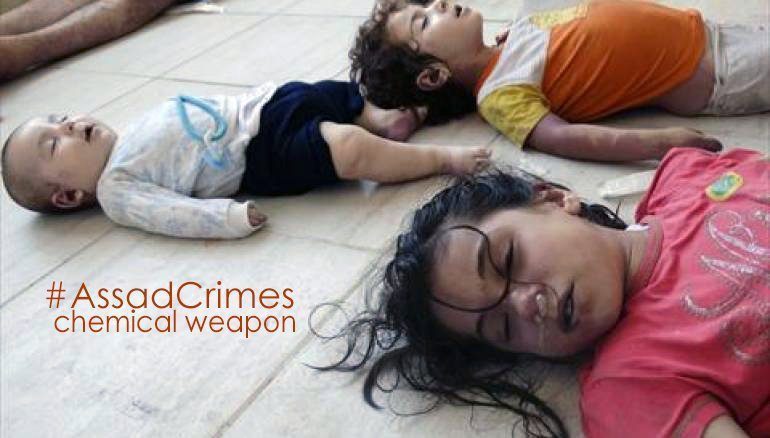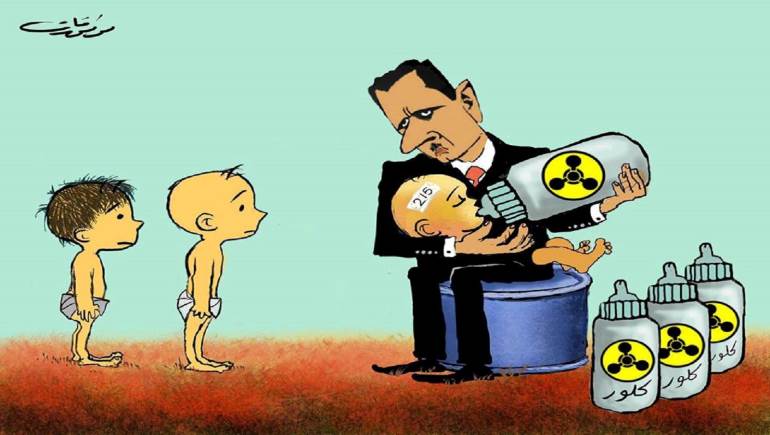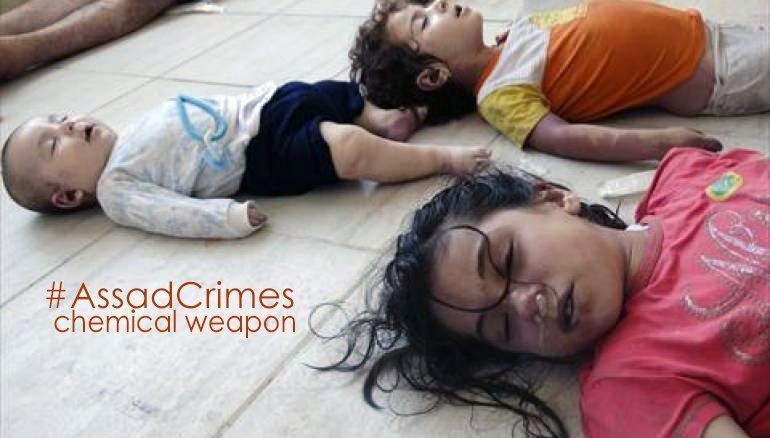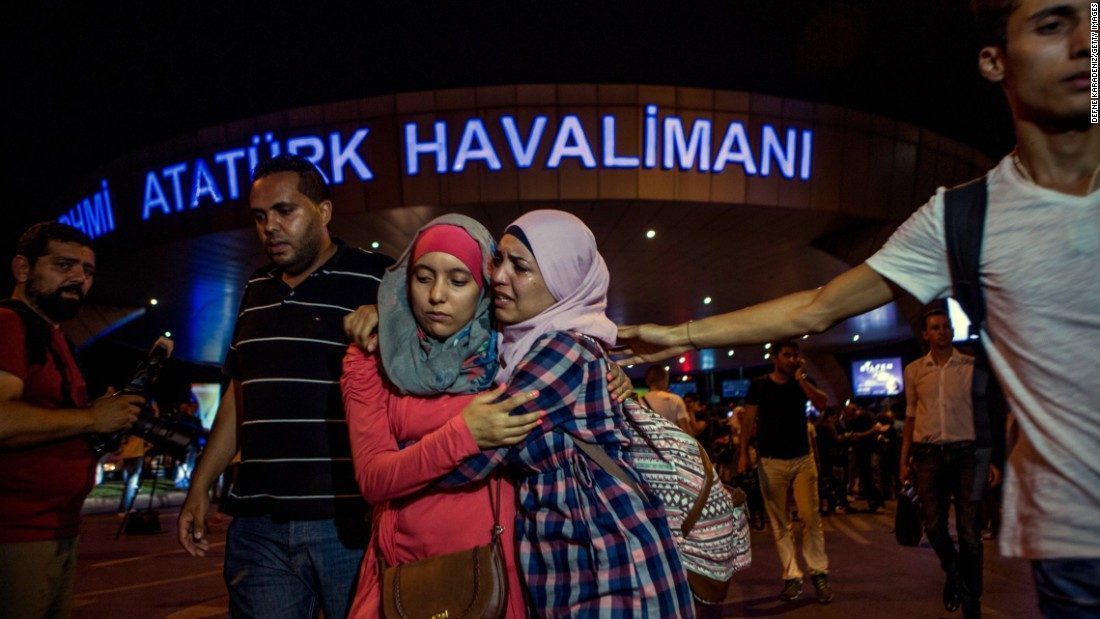
Assad regime has a long history of using chemical and prohibited weapons against civilians in Syria and the latest chapter of its crimes was made in Idlib on April 4. The world was until now unable to make real moves to stop Assad, but can the last massacre change anything?
More than 60 civilians were killed in Syria in a new chemical attack carried out by Assad regime’s air force on the rebel-held Idlib province, doctors and monitoring groups have said.
The Syrian Observatory for Human Rights said the attack caused many people to choke or faint, and some had foam coming from their mouths, citing medical sources who described the symptoms as possible signs of a gas attack. All the children were under the age of eight.
Locals said the attack began in the early morning, when they heard planes in the sky followed by a series of loud explosions after which people very quickly began to show symptoms. They said they could not identify the planes. Both Syrian and Russian jets have bombed the area before.
Opposition activists and the AFP news agency, citing one of its journalists on the scene, later said a rocket had slammed into a hospital where the victims were being treated, bringing rubble down on medics as they struggled to deal with victims.
The civil defense, also known as the White Helmets – a rescue service that operates in opposition areas of Syria – said jets struck one of its centers in the area and the nearby medical point.
The casualties have been distributed across a wide range of hospitals in Idlib, with some sent north towards Turkey. There were reports that casualties driven to the Bab al-Hawa crossing on the Turkish border were experiencing difficulties in entering the country for emergency relief.
“The total number of wounded is incredible, so far it’s over 200,” said Mohammad, a doctor at another hospital in Idlib.
This attack is the deadliest chemical attack in Syria since sarin gas killed hundreds of civilians in the rebel-held Ghouta area near the capital in August 2013. Western states said the Assad regime was responsible for the 2013 attack but it denied the charge.
Similar attack in Aleppo
In a report on February, the US-based rights group said it had verified eight chemical attacks during the offensive from November 17 to December 13, adding that four children were among the victims.
HRW said it had interviewed witnesses, collected photos and reviewed video footage to reach the conclusion that chlorine bombs were dropped from government helicopters during the operation.
Around 200 people were wounded by the toxic gases used on opposition-controlled areas of the northern city, according to HRW.
One of the deadliest bombings hit the neighborhood of Sakhur on November 20, killing six members of the same family, including four children whose lifeless bodies were shown on a video taken by the Shabha press agency.
HRW said its report did not find proof of Russian involvement in the chemical attacks, but noted Moscow’s key role in helping the government to retake eastern Aleppo.
The HRW report detailed attacks on a playground, clinics, residential streets and houses that left scores of people struggling to breathe, vomiting and unconscious.
The alleged attacks, which may have involved as many as three helicopters operating jointly, took place in areas where government forces were poised to advance, said the rights group.
“The pattern of the chlorine attacks shows that they were coordinated with the overall military strategy for retaking Aleppo, not the work of a few rogue elements,” said Ole Solvang, HRW’s deputy emergencies director.
#Chlorine gas barrel bombs, seems it has become usual weapon regime is using day to day,in the besieged #Aleppo. pic.twitter.com/XXLLPFM6GU
— Zouhir_AlShimale (@ZouhirAlShimale) November 22, 2016
Another reported use of chlorine gas in besieged eastern #Aleppo City. Casualties include many children. pic.twitter.com/HTQ2jcL0kJ
— SAMS (@sams_usa) September 6, 2016
Long history of chemical attacks
The Assad regime has repeatedly violated UN Security Council resolution 2118, which required Syria to dismantle its chemical weapons arsenal, a rights group has said in a report.
While Syrian opposition forces and human rights groups accuse the Assad regime of perpetrating the atrocity, the Syrian regime denies the claim.
Human Rights Watch said that it has strong evidence proving regime involvement in the Ghouta chemical attack.
The Syrian Network for Human Rights (SNHR) said it has documented 139 chemical attacks in Syria since September 2013 when the UN Security Council issued resolution 2118 for dismantling Syria’s chemical weapons arsenal.
The 10-page report notes that poison gasses were used 33 tons before Security Council Resolution 2118, adopted on 27 September 2013, while poison gases were used in 139 attacks by both the Syrian regime and ISIS after Security Council Resolution 2118 was adopted.
The report asserts that the Syrian regime focused in its use of poison gases on opposition-held areas where 97% of its chemical attacks targeted opposition-held areas while 3% of the attacks were carried out in ISIS-held areas.
The report sheds light on four new attacks that involved the use of chemical weapons between 1 January 2016 and 20 August 2016.
A UN investigation also concluded that Assad regime in Syria used chemical weapons against its own people.
The year-long inquiry found that the Assad regime used chlorine gas in attacks in Idlib province in 2014 and 2015.
The investigation was carried out by the Joint Investigative Mechanism (JIM) of the UN and the Organisation for the Prohibition of Chemical Weapons (OPCW), an international chemical weapons watchdog.
What has been done until now?
As the Syrians waited for the global powers to make real moves for protecting them, all they got were statements.
The US ambassador to the UN, Samantha Power, have previously said the use of chemical weapons was “barbaric” and called for “all states to support strong and swift action”.
Ms Power accused the Assad regime of violating a September 2013 resolution which orders the UN Security Council (UNSC) to impose measures for “any use of chemical weapons by anyone in the Syrian Arab Republic”.
Ned Price, a spokesman for the US National Security Council, said it was now “impossible to deny” the Syrian regime used weapons in violation of international law.
“The United States will work with our international partners to seek accountability through appropriate diplomatic mechanisms,” he said, adding that Russia and Iran should participate with UN member states.
French ambassador to the UN Alexis Lamek also said: “the council will have to act”.
“When it comes to proliferation, use of chemical weapons, such weapons of mass destruction, we cannot afford to be weak,” he added.
However, their statements were not translated into actions on the ground.
President Barack Obama said the use of chemical weapons in Syria was a “red line” for him but then withered when Assad’s forces used sarin-filled shells to kill some 1,400 Syrians men, women, and children in 2013. America has armed and trained Syrian rebels, but only in small numbers. It never bombed Assad’s forces their behalf or established a no-fly zone where Syrian civilians might be safe from Syrian and Russian airstrikes.
The Syrian crisis began as a peaceful demonstration against the injustice in Syria. Assad regime used to fire power and violence against the civilians and led to armed resistance. 450.000 Syrians lost their lives in the past five years according to UN estimates, and more than 12 million have lost their homes.





